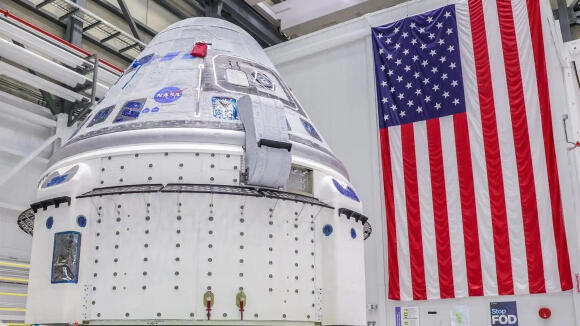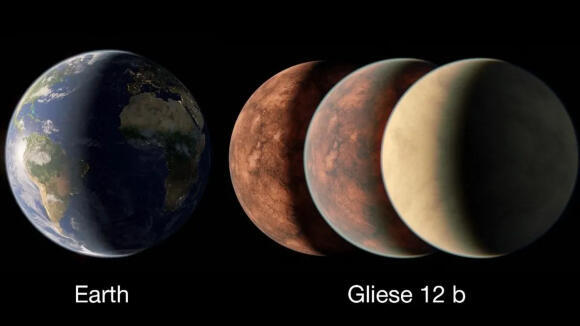A few days ago, China successfully completed the first space mission designed to bring soil samples from the far side of the moon back to Earth. The lander of the Chang’e-6 mission successfully landed on Sunday morning inside the Apollo Crater – a crater spanning about 500 kilometers nestled within the giant South Pole-Aitken Basin - an enormous crater spanning over 2,000 kilometers in diameter.
The crater is located in the southern part of the far side of the moon, which never faces Earth. The lander is equipped with a scoop and a drill to collect samples from the soil, and the Chinese space agency hopes it will collect about two kilograms of soil and rocks.
After about 48 hours on the lunar surface, the sample collection container inside a part of the lander took off from the lunar surface and was launched to dock with an unmanned spacecraft waiting in orbit around the moon. It is planned to bring the container back to Earth and drop it off towards the end of June.
The Chang’e-6 mission was launched about a month ago, and four days later it successfully entered orbit around the moon. Since then, it has made several maneuvers to enter a closer orbit to the lunar surface, and the autonomous landing took place during the lunar morning in the Apollo Crater, capitalizing on optimal lighting and visibility conditions.
The Chinese mission also includes a tiny rover and collaborative efforts with several countries, incorporating scientific instruments from France and Sweden to study gas ions near the lunar surface, an Italian laser reflector for distance measurements, and a tiny Pakistani satellite placed into orbit around the moon.
China is the only country to have successfully landed a spacecraft on the far side of the moon, about five years ago. Subsequently, they also successfully achieved an unmanned mission to collect samples from the near side of the moon about a year later. Now it intends to combine the two capabilities and bring samples from the far side for the first time.
Researchers anticipate that these coveted samples will help better understand the geological differences between the two sides of the moon, thereby unraveling details about the geological history of our closest neighbor and improving our understanding of its formation. The mission also marks another step toward implementing the Chinese plan to land humans on the moon and eventually establish a manned lunar outpost.
Video about the Chang’e-6 mission and its objectives
Leaky launch
Despite grappling with a helium leak persisting within Boeing's Starliner spacecraft, Boeing and NASA have resolved to proceed with the crewed test flight to the International Space Station last weekend. This decision follows four prior postponements in the past month, initially due to a malfunction in the Atlas V launch rocket by ULA, and subsequently, due to the spacecraft's leak.
The crewed test flight will be piloted by two veteran NASA astronauts, Barry Wilmore and Sunita Williams. If successful, Boeing will join SpaceX, which has been operating manned flights to the space station since 2020. This marks the first instance of two companies operating manned flights to Earth's orbit, positioning the United States as the sole nation with three entities launching humans into space, alongside two companies operating space tourism flights to the edge of space.
The leak originates from one of the helium tanks used to rotate the spacecraft, deemed a minor issue by the company, necessitating the spacecraft's return to the factory for repairs. “We can handle this particular leak if that leak rate were to grow even up to 100 times,” said Steve Stich, manager of NASA's Commercial Crew Program, during a press conference.
Boeing's launch comes after a prolonged period of delays and setbacks. The company completed an uncrewed test flight to the space station about two years ago, but technical issues necessitated subsequent repairs, incurring significant financial losses for Boeing. Despite recurrent postponements, a plausible progression seems likely this time around.
2 View gallery


Will it reach the space station despite the helium leak? Boeing's Starliner spacecraft in manned configuration
(Photo: NASA)
Our close twin?
Gliese 12 is a red dwarf star, smaller and much cooler than our sun, resides approximately 40 light-years away from us. Recent measurements of this star have revealed a planet remarkably similar to Earth, just slightly larger. The planet, Gliese 12b, is much closer to its sun and completes an orbit in just under 13 Earth days.
However, since its sun is much weaker compared to ours, it receives only slightly more energy than Earth. The radiation it receives is 1.6 times that of Earth, leading researchers to estimate that its surface temperature is 42 degrees Celsius. This means that the planet is positioned within the "habitable zone" – the distance from its sun that allows for the presence of liquid water on its surface.
The planet was initially discovered through measurements by NASA's TESS space telescope, which detects minute fluctuations in star brightness. A regular periodic drop in brightness likely indicates a planet passing between its star and us. Follow-up observations by the CHEOPS space telescope and ground-based instruments have confirmed the initial finding. However, the existence of an atmosphere remains the most tantalizing question.
To investigate this, researchers need to compare the wavelength composition of the star's light in its normal state to the light that passes very close to the planet and through its atmosphere, if it exists. By analyzing the differences, researchers can determine whether it indeed has an atmosphere and even infer its composition. Such measurements can be made using the James Webb Space Telescope, and the fact that this planet is both very close in cosmic terms and transits in front of its star makes it an ideal candidate for such observations.
If an atmosphere indeed exists, its composition could offer valuable insights into the potential presence of life. Researchers could investigate whether it harbors gasses produced solely by biological processes, or if its composition deviates from expected chemical equilibrium, potentially indicating such biological activity—akin to the surplus oxygen in our atmosphere. However, even if Gliese 12b has a favorable atmosphere, it doesn't necessarily assure the presence of life or habitable conditions as we understand them.
For instance, we do not know whether the planet has a global magnetic field shielding it from charged particles, akin to Earth's, nor do we know the level of activity of its star. Red dwarfs, in particular, are susceptible to powerful X-ray radiation bursts, which could pose a threat to any potential living creatures on the planet.
Regrettably, despite the system’s relative proximity in cosmic terms, it is still incredibly far and reaching it remains a formidable challenge. With current technologies, a journey of hundreds of thousands of years would be required. Even in the hypothetical scenario where intelligent beings capable of communication exist there, posing a question such as "How are you?" today and getting an immediate response would mean our great-grandchildren would receive the answer in 80 years.
Nevertheless, researchers eagerly await the forthcoming findings. "I think Gliese 12 b will teach us a lot about life, but we can't say anything for certain," said Larissa Palethorpe from University College London, one of lead researchers in the study. I think it's very exciting, and we should definitely look forward to more research coming out about Gliese 12 b. It's not a bad place to start on a hunt for life," she concluded.
2 View gallery


Looking for signs of life. Imagery depicting the possible appearance of the exoplanet Gliese 12b in comparison to Earth's size
(Photo: University of Warwick)

